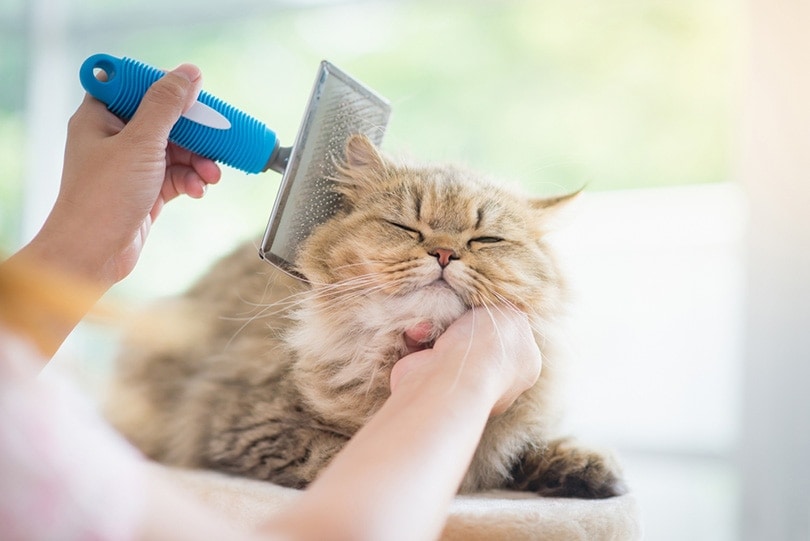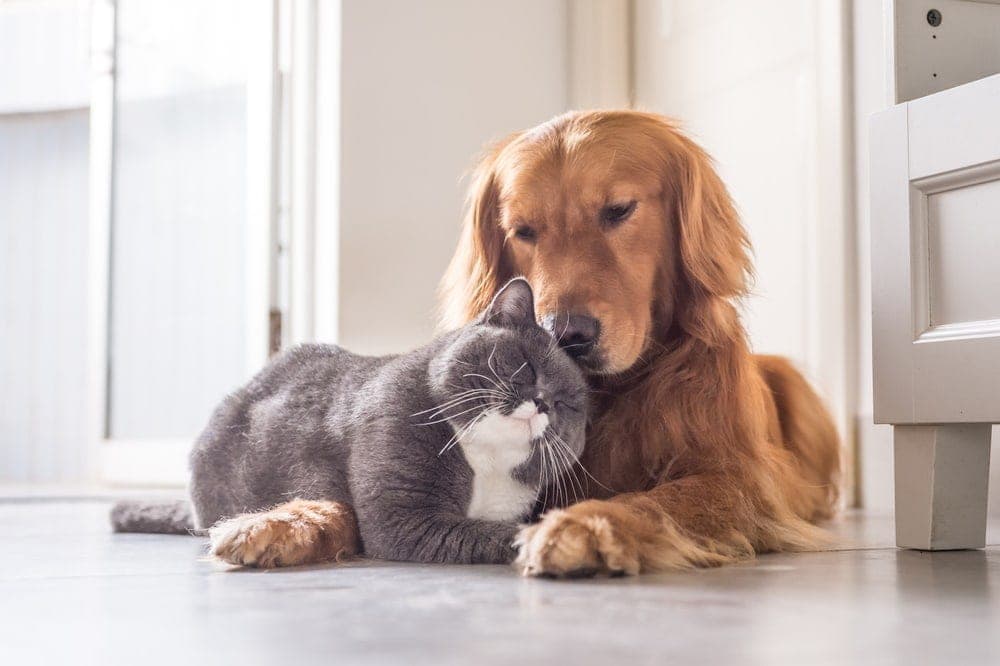Tortoiseshell Persian Cat: Facts, History & Origin (With Pictures)

Updated on
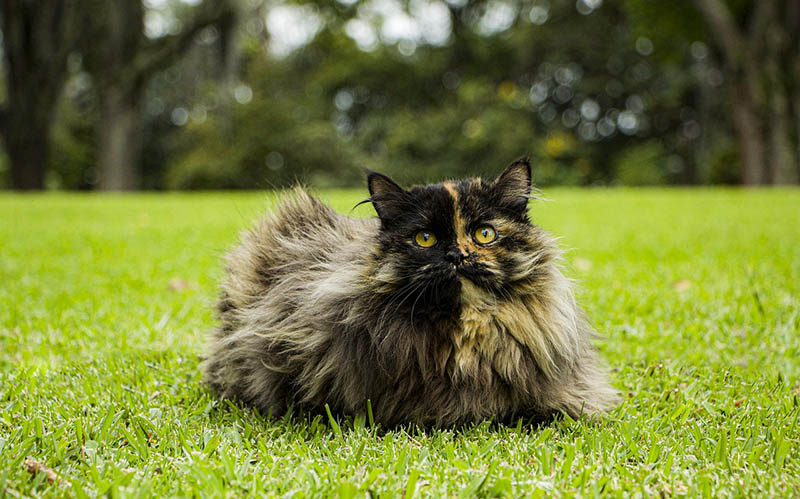
The Tortoiseshell Persian cat is a magnificent feline with a unique coat pattern. The truth is, “Tortoiseshell Persian” is neither a breed nor a cross—it’s simply a Persian cat that has a particular coat color. Of course, the Tortoiseshell Persian cat has plenty of other interesting characteristics, so let’s take a closer look!
The Earliest Records of Tortoiseshell Persian Cats in History
The history of the Tortoiseshell Persian is just as hard to pin down as its coat pattern. The Persian cat breed has been around since the 1500s, when Europeans first imported cats from Persia1. However, there are no concrete records of when the tortoiseshell coat pattern first appeared in the breed.
What we do know is that the tortoiseshell pattern is equally old. So old, in fact, that Tortoiseshell cats are the stuff of folklore and legends around the world2. The Celts viewed them as a good luck charm. Japanese fishermen would take Torties on their ships to bring them luck at sea and keep ghosts at bay. In the US, Torties have gotten the nickname “money cats,” as they are believed to bring wealth and financial prosperity.
How Tortoiseshell Persian Cats Gained Popularity
Persian cats are one of the most popular cat breeds of all time3. These gentle felines are beloved for their calm disposition and luxurious long coats.
Add the relatively rare tortoiseshell pattern, and you have the Tortoiseshell Persian—a sought-after breed in the show ring, as well as with pet owners. It’s not hard to see why; these cats look like a walking piece of art!
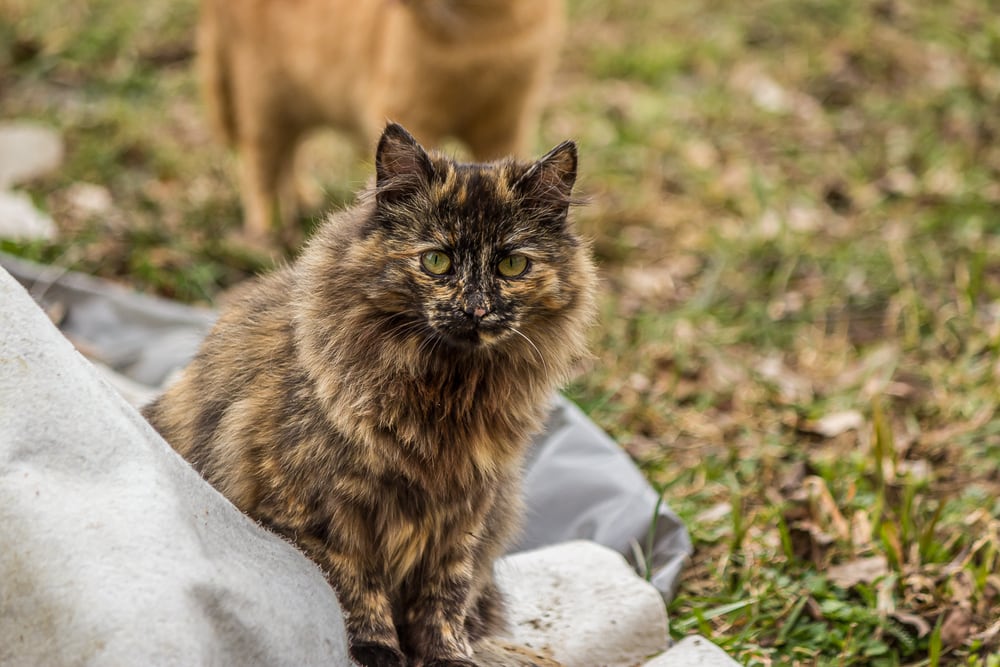
Formal Recognition of Tortoiseshell Persian Cats
The Persian cat was one of the foundation breeds of the Cat Fanciers Association (CFA) and was recognized in 19064. The “tortoiseshell” pattern is officially a part of the breed standard. Specifically, Tortoiseshell Persian cats fall under the following color categories5:
- Shaded and Smoke Division Colors
- Parti-Color Division Colors
What these cats have in common are coats with shades of black and red intermingled with a variety of undercoats and patterns for the nose, paw pads, chest, and tail.
Tortoiseshell Persian cats that meet the breed standard for Tortoiseshells can compete in the show ring and have their own CFA titles.
 Top 6 Unique Facts About Tortoiseshell Persian Cats
Top 6 Unique Facts About Tortoiseshell Persian Cats
1. Most Tortoiseshell Persian Cats Are Females
Tortoiseshell cats are almost always female, as the gene that gives them their unique coloring is found in the X chromosome. The black and orange codes are linked together, so two X chromosomes are needed for the pattern to show up.
2. Tortie Persian Males Are Rare
Because two X chromosomes are needed, male Tortie Persians are incredibly rare. Some estimates put it as only 1 in 3,000 cats! Sadly, male Torties are also saddled with several health issues, such as sterility and developmental difficulties.
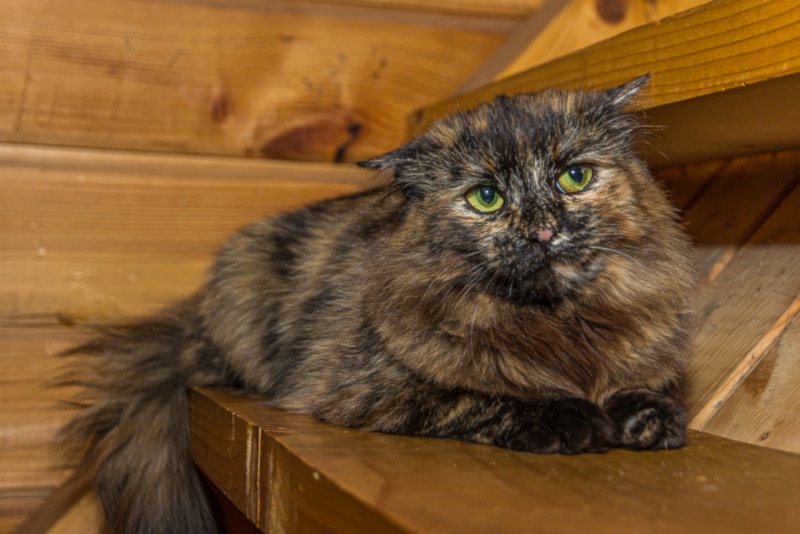
3. Any Cat Breed Can Be a Tortoiseshell
While Tortoiseshell Persian cats are certainly gorgeous, it’s not an exclusive Persian trait. Any cat breed, from the Maine Coon to the Siamese, can be a tortoiseshell.
4. “Tortitude” Is a Thing
Tortie cats are famous for their feisty personalities, aka “tortitude.” These cats can be independent and stubborn, but also incredibly loving and loyal. Research is still out regarding whether the personality is linked to genetics or gender, but Tortie owners would be happy to testify! So, if you’re planning on getting a Tortoiseshell Persian cat, make sure you’re ready for a lot of sass.
5. “Torbie” Persian Cats Are Also a Thing
Torties aren’t the only type of tortoiseshell cats out there. There are also Torbies, which are a combination of tortoiseshell and tabby. You can usually recognize a Torbie by the stripes on their faces, legs, and tails. And yes, Torbie Persian cats are just as gorgeous!
6. Tortoiseshell Persian Cats Are Believed to Bring Good Luck
As we mentioned earlier, tortoiseshell cats have been a symbol of luck and wealth for centuries. Their reputation has crossed oceans, from the Celts to the Japanese, and throughout the US, Asia, and Europe.
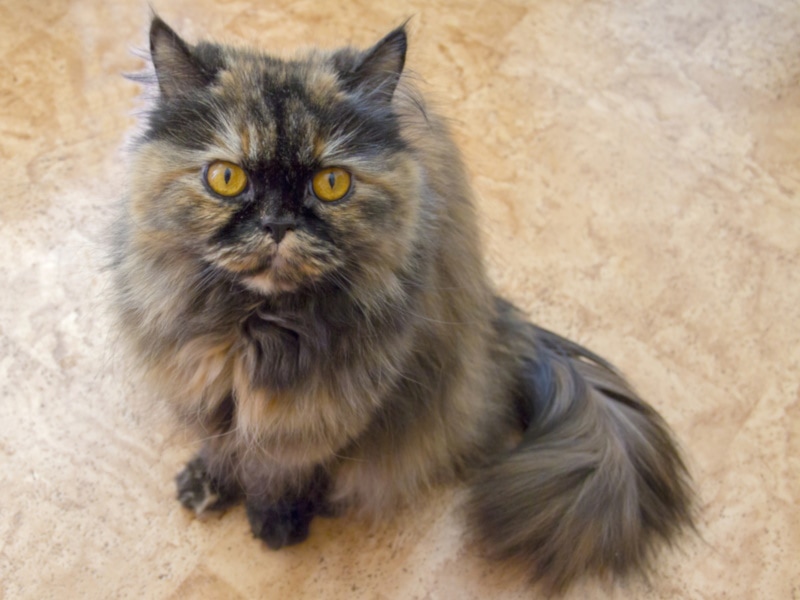
Does a Tortoiseshell Persian Cat Make a Good Pet?
Yes! Tortoiseshell Persian cats have all the delightful qualities that have made Persians such a beloved cat breed all over the world. These cats are quiet and sweet, and love nothing better than to curl up in a lap for long cuddles.
Be ready for those Tortie moments—Persians can also get the zoomies! One moment, they’re contentedly purring away, and the next, they’re tearing through the house with a wild gleam in their eyes. But in general, Tortie Persians are friendly cats who get along with just about anyone.
Tortoiseshell Persian cats do have some special care requirements. For instance, that adorable flat face can cause eye and breathing issues, so make sure you get your Persian checked out by a vet regularly. These cats also love naps more than play time, so need to exert extra effort to get them to move and stay healthy.
That long, thick, and gorgeous Tortoiseshell coat also requires regular grooming. Tangles and mats are common, so make sure you brush your Tortie Persian every other day.
Conclusion
Tortoiseshell Persian cats combine the sass of the Tortie with the gentleness of the Persian. And of course, you have that amazing coat: long, thick, and dappled with shades of black, red, and gold. Outside of their looks, Tortie Persians make for wonderful feline companions, as long as you’re ready to take care of their coats and stay on top of common Persian cat health issues.
Featured Image Credit: andres felipe Aristizabal, Pixabay



